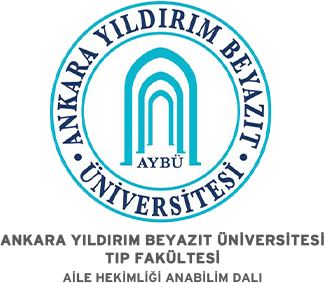Huzursuz Bacak Sendromunda Islak Kupa Yönteminin Hastaların Semptom Düzeyi ve Uyku Kalitesi Üzerine Etkisi
Gülsüm Yurttutan, Basri Furkan DağcıoğluAnkara Yıldırım Beyazıt Üniversitesi Tıp Fakültesi Aile Hekimliği AD.GİRİŞ ve AMAÇ: Huzursuz bacak sendromu (HBS), ekstremitelerde anormal duyularla giden, genellikle geceleri semptomların belirginleştiği, rahatsızlık veren, ekstremiteleri hareket ettirme isteği uyandıran kronik bir hastalıktır. HBS semptomlarının nedenleri henüz net olarak açıklanamadığı için tedavi de semptomları hafifletmeye yönelik yapılmaktadır. Bu çalışmada kupa terapinin HBS üzerine etkinliğini araştırmayı amaçladık.
YÖNTEM ve GEREÇLER: Çalışmamız Ankara Şehir Hastanesi Nöroloji ve Aile Hekimliği Polikliniklerinde Ocak 2019 ve Aralık 2019 tarihleri arasında yürütüldü. Huzursuz Bacak Sendromu tanısı almış iki hasta grubu oluşturuldu. Birinci grup mevcut haliyle pramipeksol tedavisi alan hastalardan ikinci grup ise medikal tedavi almamış hastalardan oluşturuldu. Her iki gruba bir ay ara ile 2 seans kupa terapi yapıldı. Hastalara ıslak kupa terapi öncesi ve sonrası Pittsburgh Uyku Kalite İndeksi (PUKİ) ve Huzursuz Bacak Sendromu Şiddet Skalası (HBSŞS) uygulanarak her iki grupta skorlar karşılaştırıldı.
BULGULAR: Birinci grupta ıslak kupa terapi uygulamasından sonra dört HBSŞS alt kategorisinde (hareket etme ihtiyacı, uyku bozukluğu, şikayetlerin günlük ortalama şiddeti ve HBSŞS toplam puanı) belirgin düşme olduğu saptandı. İkinci grupta ise, işlem sonrasında altı kategoride (HBS şikayetlerinin oranı, hareket etme ihtiyacı, uyku bozukluğu, yorgunluk ve uyku hali, HBS şikayetlerinin sıklığı, şikayetlerin günlük ortalama şiddeti) anlamlı düşme oldu. İkinci grupta PUKİ kategorilerinden uyku latansı, gündüz işlev bozukluğu ve PUKİ toplam puanı anlamlı oranda düzeldi (sırasıyla p=0,041, p=0,024, p=0,025). Prosedür sonrasında ikinci grubun HBSŞS puanlarının daha belirgin düştüğü saptandı (p=0,012).
TARTIŞMA ve SONUÇ: Medikal tedavi almayan grupta ıslak kupa terapinin semptomları azaltmada daha etkin olduğu görüldü. Özellikle hafif şikayetleri olan HBSli hastalara semptomları azaltmak amacıyla ıslak kupa terapisi önerilebilir. Kupa terapinin etkinliğini inceleyen ileri bilimsel çalışmalarla, bu tedavinin etki mekanizmasının netleşeceği ve daha etkin ve güvenli bir şekilde uygulanabileceği düşünülmektedir.
Anahtar Kelimeler: Huzursuz bacak sendromu, kupa terapi, uyku kalitesi
The Effect of Wet Cupping Therapy on Patients' Symptom Level and Sleep Quality on Restless Leg Syndrome
Gülsüm Yurttutan, Basri Furkan DağcıoğluAnkara Yıldırım Beyazıt University, Faculty of Medicine, Department of Family MedicineINTRODUCTION: Restless leg syndrome (RLS) is a chronic disease that goes with abnormal sensations in the extremities. Usually, the symptoms become evident at night, which causes discomfort and a desire to move. Since the causes of RLS symptoms have not been clearly explained yet, treatment is aimed at alleviating the symptoms. In this study, we aimed to investigate the effectiveness of cupping therapy on RLS.
METHODS: Our study was carried out in Ankara City Hospital Neurology and Family Medicine Polyclinics between January 2019 and December 2019. The patients with the diagnosis of Restless Leg Syndrome were divided into two groups. The first group consisted of patients who currently received pramipexole therapy, and the second group consisted of patients who received no medical treatment. Both groups received 2 sessions of cupping therapy at the one-month interval. Pittsburgh Sleep Quality Index (PSQI), and Restless Leg Syndrome Severity Scale (RLSSS) were applied to the patients before and after wet cupping therapy, and the scores were compared between groups.
RESULTS: In the first group, a significant decrease was found in four RLSS subcategories (need to move, sleep disturbance, mean daily severity of complaints, and RLSSS total score) after wet cupping therapy. In the second group, there was a significant decrease in six categories (rate of RLS complaints, need to move, sleep disturbance, fatigue and sleepiness, frequency of RLS complaints, average daily severity of complaints) after the procedure. In the second group, sleep latency, daytime dysfunction and PSQI total score among the PSQI categories improved significantly (p = 0.041, p = 0.024, p = 0.025, respectively). It was found that the RLSS scores of the second group decreased more significantly after the procedure (p = 0.012).
DISCUSSION AND CONCLUSION: It was concluded that wet cupping therapy was more effective in reducing symptoms in the group not receiving medical treatment. Wet cupping therapy can be recommended to reduce symptoms, especially to patients with RLS with mild complaints. With advanced scientific studies examining the effectiveness of cupping therapy, it is thought that the mechanism of action of this treatment will be clarified and it can be applied more effectively and safely.
Keywords: Restless leg syndrome, cupping therapy, sleep quality
Makale Dili: Türkçe
(4702 kere indirildi)





